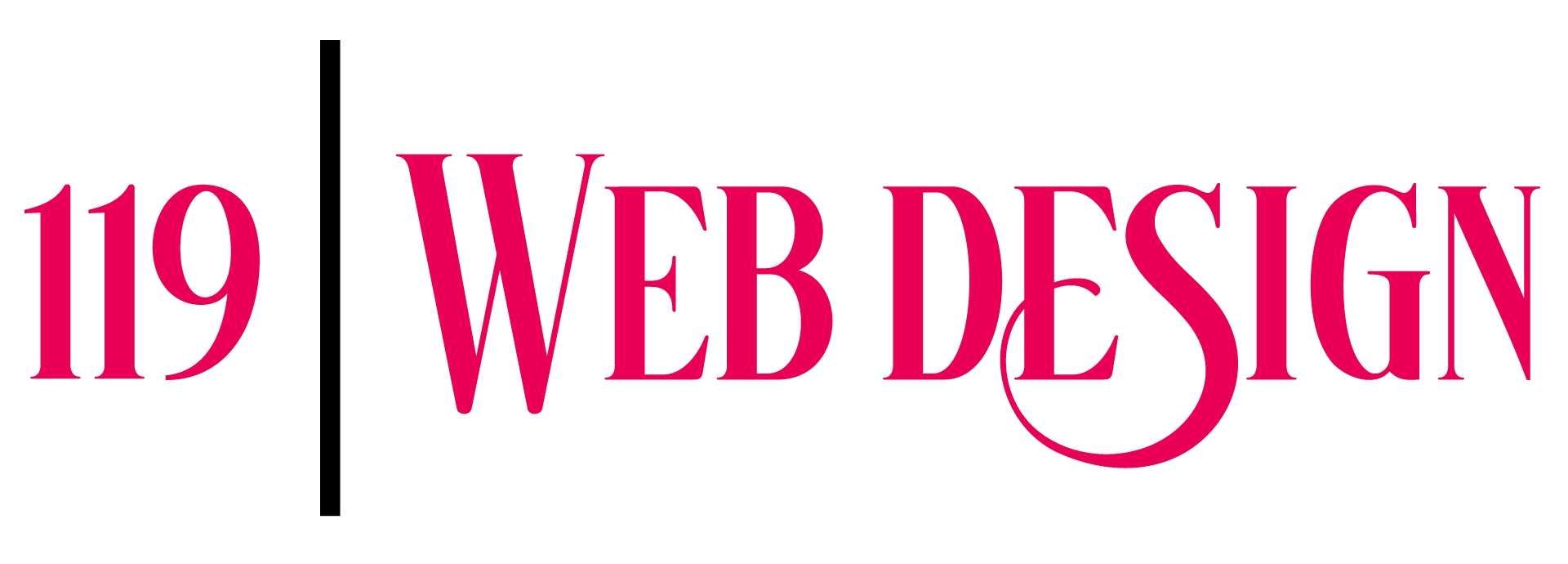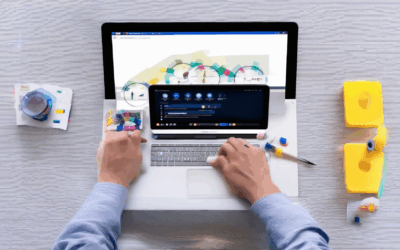For small businesses aiming to thrive in today’s competitive landscape, having a well-designed website is no longer optional—it’s essential. With countless options for website design, choosing the right approach can feel overwhelming. Whether you’re just starting out or looking to refresh your current site, understanding the costs, creation process, and long-term benefits of a professional website design is crucial for driving growth and establishing credibility. This guide explores everything you need to know, from budget considerations to the best tools for creating an effective online presence. By addressing common questions and providing actionable insights, we’ll help you make informed decisions that align with your business goals. Read on to discover how a thoughtfully crafted website can elevate your small business to new heights.
Key Takeaways
- Website Design Costs: Small businesses can expect to spend between $2,000 and $6,000 on website design and development, with costs varying based on project complexity, designer type, and scope.
- Hiring a Professional: Benefits include cost efficiency, expert-level design and coding, time savings, and SEO optimization, making it a worthwhile investment for quality and performance.
- DIY vs. Professional: While DIY options are affordable and fast, hiring a professional offers superior quality and customization, catering to unique business needs.
- Project Complexity: More intricate websites requiring custom programming or e-commerce may take 150 to 250 hours or more to design and develop.
- Ongoing Maintenance: Expect additional costs for domain hosting, content updates, and technical support, ranging from $100 to $500 per month.
- Investment Justification: For businesses prioritizing online presence and scalability, investing in professional web design yields long-term benefits and higher returns.

How Much Does a Website Design Cost for a Small Business?
The cost of website design for a small business varies based on several factors, including the complexity of the project, the scope of the design, and additional features required.
Factors Influencing Website Design Costs
- Project Complexity: – Simple static websites typically cost between $500 and $1,500. – Complex dynamic websites, including custom functionality, can range from $2,000 to $10,000 or more.
- Design Customization: – Custom-designed websites, tailored to specific branding and needs, usually cost between $1,000 and $3,000.
- Content Management System (CMS): – Implementing a CMS like WordPress can add $500 to $2,000, depending on the theme and plugins used.
- E-commerce Features: – Building an online store with platforms like Shopify or BigCommerce can cost between $1,000 and $5,000, including product listings and payment gateways.
- Mobile Responsiveness: – Ensuring the website is mobile-friendly is essential and can add to the overall cost.
- Additional Services: – SEO optimization, hosting, and maintenance can add another $500 to $3,000.
Estimated Budget Range
For a small business, a budget of $3,000 to $15,000 is typical, covering everything from design to basic functionality and hosting.
Tips for Budgeting
- Request detailed quotes from multiple web design agencies.
- Check portfolio examples and ask for references.
- Negotiate packages to fit your business needs.
How to Create a Website for Your Small Business
To create a website for your small business, follow these essential steps:
- Choose a Domain Name
- Select Hosting
- Build Your Website
- Customize Your Theme
- Optimize Content and SEO
- Set Up Security Measures
- Add Necessary Features
- Test and Launch
- Promote Your Website
- Analyze and Optimize
- Maintain Regularly
– Select a domain name that reflects your brand and is easy to remember. Register it using a reliable platform like GoDaddy or Namecheap .
– Pick a hosting provider such as Bluehost or SiteGround . Compare plans based on cost, disk space, and bandwidth to find the best fit for your needs.
– Use a content management system (CMS) like WordPress for its flexibility and extensive plugin library. Alternatively, consider Squarespace for its intuitive design tools.
– Install a theme that aligns with your brand identity. Ensure the theme is responsive to provide a seamless experience across devices. Customize it with your logo, colors, and fonts.
– Write high-quality content that highlights your services and unique selling points. Use plugins like Yoast SEO to optimize for search engines. Include meta descriptions, keywords, and alt texts for images.
– Enable HTTPS to secure your site. Use strong passwords and regular updates to protect against vulnerabilities. Consider installing a security plugin like Wordfence .
– Create a menu with links to key pages like Home, Services, About Us, Contact, and Blog. Include a logo, navigation bar, and footer for a professional look. Add a contact form for inquiries.
– Test your website on different browsers and devices. Fix any issues with broken links or slow loading times. Once ready, publish your site and prepare for launch.
– Share your website on social media platforms. Use Google Ads to target local customers. Encourage satisfied clients to leave positive reviews and link to your site from theirs.
– Use Google Analytics to monitor traffic and identify areas for improvement. Conduct A/B testing to refine your design and content strategy. Consider tools like SEMrush for competitive analysis.
– Update your content quarterly to keep it relevant. Check for broken links and ensure all software is updated to maintain security and functionality.

Best Website Maker for Small Businesses
When choosing a website builder for small businesses, it’s essential to consider ease of use, cost-effectiveness, and robust features. Here are some top recommendations:
- Wix – Known for its user-friendly interface and extensive template library, Wix is ideal for small businesses seeking a visually appealing website without needing technical expertise. Its drag-and-drop editor and mobile-optimized designs make it a top choice. Learn More
- Squarespace – A excellent option for small businesses looking to create a professional online presence. Squarespace offers a seamless combination of web design, e-commerce, and blogging tools, with affordable pricing plans. Learn More
- WordPress – While slightly more complex due to its content management system (CMS), WordPress provides unmatched flexibility and scalability. With numerous plugins and themes available, it’s a great choice for businesses aiming to grow their online presence. Learn More
- Jimdo – Perfect for small businesses that want a simple, no-frills website. Jimdo offers a fast setup process and a free version, making it accessible for those on a tight budget. Learn More
- Bluehost – Known for its reliable hosting services, Bluehost provides everything needed to build and host a website. Their WordPress hosting plans are particularly popular among small businesses. Learn More
To help you decide, here’s a quick comparison:
| Platform | Ease of Use | Pricing | Features |
|---|---|---|---|
| Wix | Very Easy | Free and Paid Plans | Templates, E-commerce, Mobile Optimization |
| Squarespace | Easy | Affordable Pricing | Design, E-commerce, Blogging |
| WordPress | Intermediate | Free and Paid Plugins | Customizable, SEO Tools, E-commerce |
| Jimdo | Extremely Easy | Free and Paid Options | Basic Features, Mobile-Friendly |
| Bluehost | Intermediate | Competitive Pricing | Hosting, Domain, CMS Integration |

How Much Does It Cost to Pay Someone to Design a Website?
The cost of hiring a web designer varies depending on several factors, including the type of designer, the scope of the project, and the complexity of the website.
Freelance vs. Agencies
- Freelance Designers: These professionals typically charge by the hour, ranging from $30 to $200 per hour. Smaller projects may cost less, while larger ones can exceed $10,000.
- Web Design Agencies: These firms often offer packages that include design, development, and hosting, with prices ranging from $2,000 to $50,000+ depending on the package and services provided.
Project Scope
- Basic Websites: Costs range from $500 to $1,500 for a simple static site with minimal functionality.
- Complex Websites: Projects requiring e-commerce, custom programming, or extensive UI/UX design can cost $10,000 to $100,000+.
- Custom Design: Enterprise-level companies may pay $15,000 to $100,000+ for a fully customized design tailored to their specific needs.
Cost by Business Size
- Small Businesses: Typically spend between $2,000 and $6,000 on website design and development.
- Enterprise Companies: May invest $25,000 to $150,000+ for custom web design and development, including additional features like CMS integration and mobile apps.
Additional Considerations
- Domain and Hosting: These costs are often separate and can range from $10 to $100+ per year.
- Ongoing Maintenance: Post-design costs may include monthly updates, security, and technical support, adding $100 to $500+ per month.
- Location and Experience: Prices can vary by geographic location and the designer’s experience level.
When budgeting for website design, it’s essential to consider the long-term goals and scalability of the project to ensure the investment provides the best return on investment.
Is It Worth Paying Someone to Build a Website?
Determining whether it’s worth paying someone to build a website involves evaluating several factors, including your technical expertise, budget, timeline, and the quality of the outcome.
Pros of Hiring a Professional
- Cost Efficiency: While DIY options are affordable, hiring a professional can save time and reduce stress. They handle all aspects, from design to coding and hosting.
- Expertise: Professionals bring years of experience, ensuring a high-quality result tailored to your needs.
- Time Savings: If you lack the technical skills or prefer to focus on your business, hiring a developer allows you to launch quickly.
- SEO Optimization: Professionals optimize websites for search engines, boosting visibility and traffic.
- Design and Functionality: A professional ensures your website looks polished and works smoothly across devices.
Cons of Hiring a Professional
- Cost: Professional services can be expensive, though prices vary based on the project’s complexity.
- Control: You may lose some creative control, as the designer or developer will make final decisions.
- Timeline: Custom builds can take longer compared to templates or DIY solutions.
When to Hire a Professional
- If you need a unique, custom website tailored to your specific goals.
- If you lack the technical skills or don’t want to learn to build and maintain a website.
- If your business relies heavily on a strong online presence and you can afford the investment.
DIY vs. Professional: Which Is Better?
| Aspect | DIY | Hiring a Professional |
|---|---|---|
| Cost | Low to High | Higher |
| Time | Longer | Shorter |
| Quality | Might be lower | High |
| Features | Basic to Advanced | Customizable |
Final Consideration
Your decision should align with your specific needs, budget, and goals. If you value convenience, quality, and efficiency, hiring a professional is likely worth it. However, if you’re confident in your skills and prefer hands-on control, DIY platforms can be a cost-effective solution.

How Many Hours Does It Take to Design a Website?
The time required to design a website depends on several factors, including the complexity of the project, the scope of work, and the tools or resources available. Below is a breakdown of the key considerations:
1. Project Complexity
- Simple Websites : A basic website with a few pages and minimal functionality typically takes around 80 to 100 hours to design and develop.
- Complex Websites : Projects involving custom programming, e-commerce platforms, or extensive responsive design may require 150 to 250 hours or more.
2. Scope of Work
- Content Creation : Additional time is needed for creating text, images, and multimedia content, which can extend the timeline by 20 to 50 hours .
- Design Iterations : Client feedback or iterative design changes can add 10 to 30 hours to the project.
3. Tools and Resources
- Using design tools like Adobe Creative Suite, Figma, or 119 Web Design’s platform can significantly reduce the time required. These tools streamline the design process and allow for faster collaboration.
4. Collaboration and Development
- Involving developers, designers, and content creators can extend timelines by 10 to 30 hours , depending on the team size and communication channels.
Conclusion
The total time to design a website ranges from 80 hours for a simple site to 250+ hours for complex projects. Factors like project complexity, content creation, and collaboration play a significant role in determining the overall timeline. For professional guidance, consider utilizing resources from 119 Web Design to streamline your web design process. Their comprehensive guides and tools are designed to help you achieve exceptional results efficiently.




0 Comments